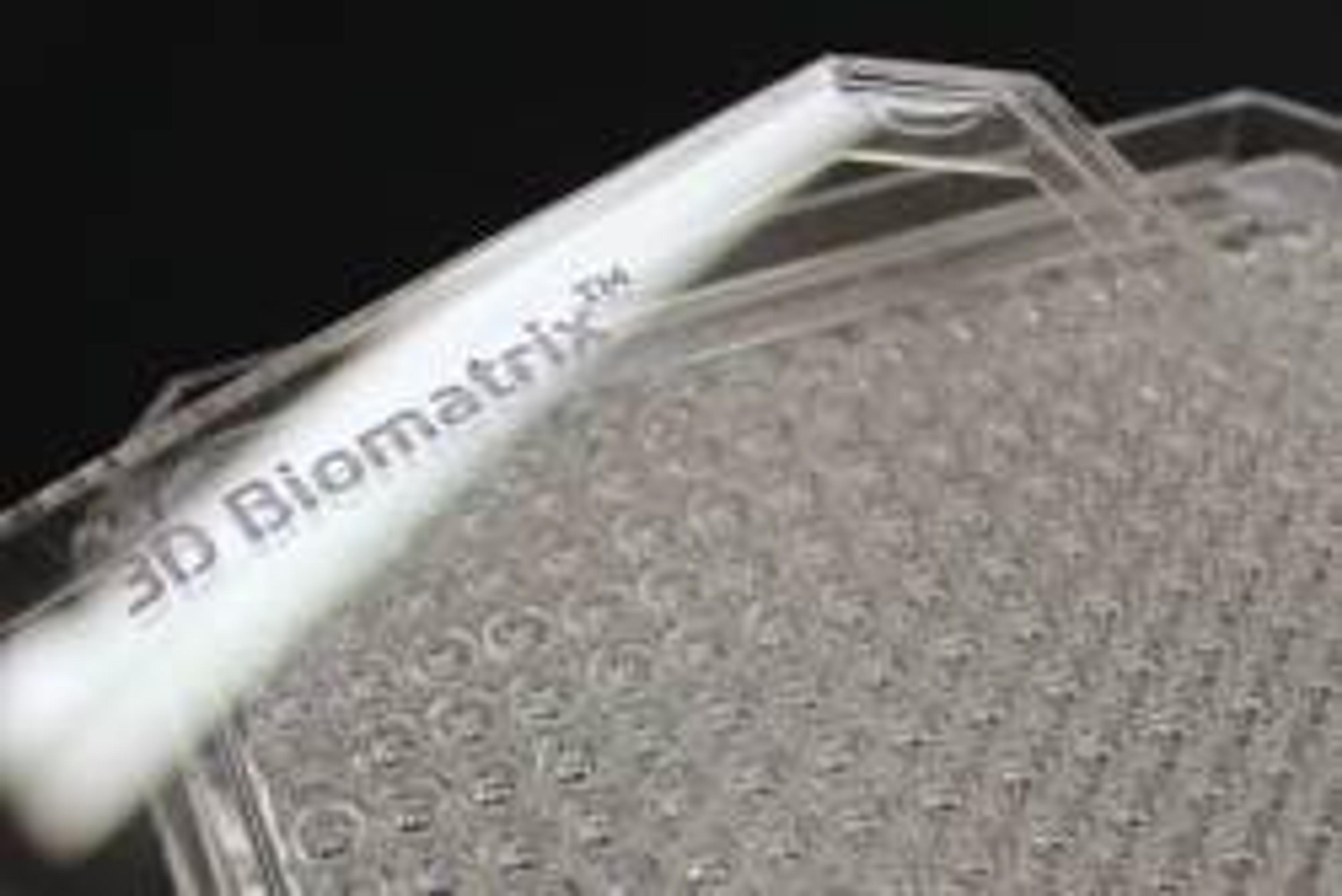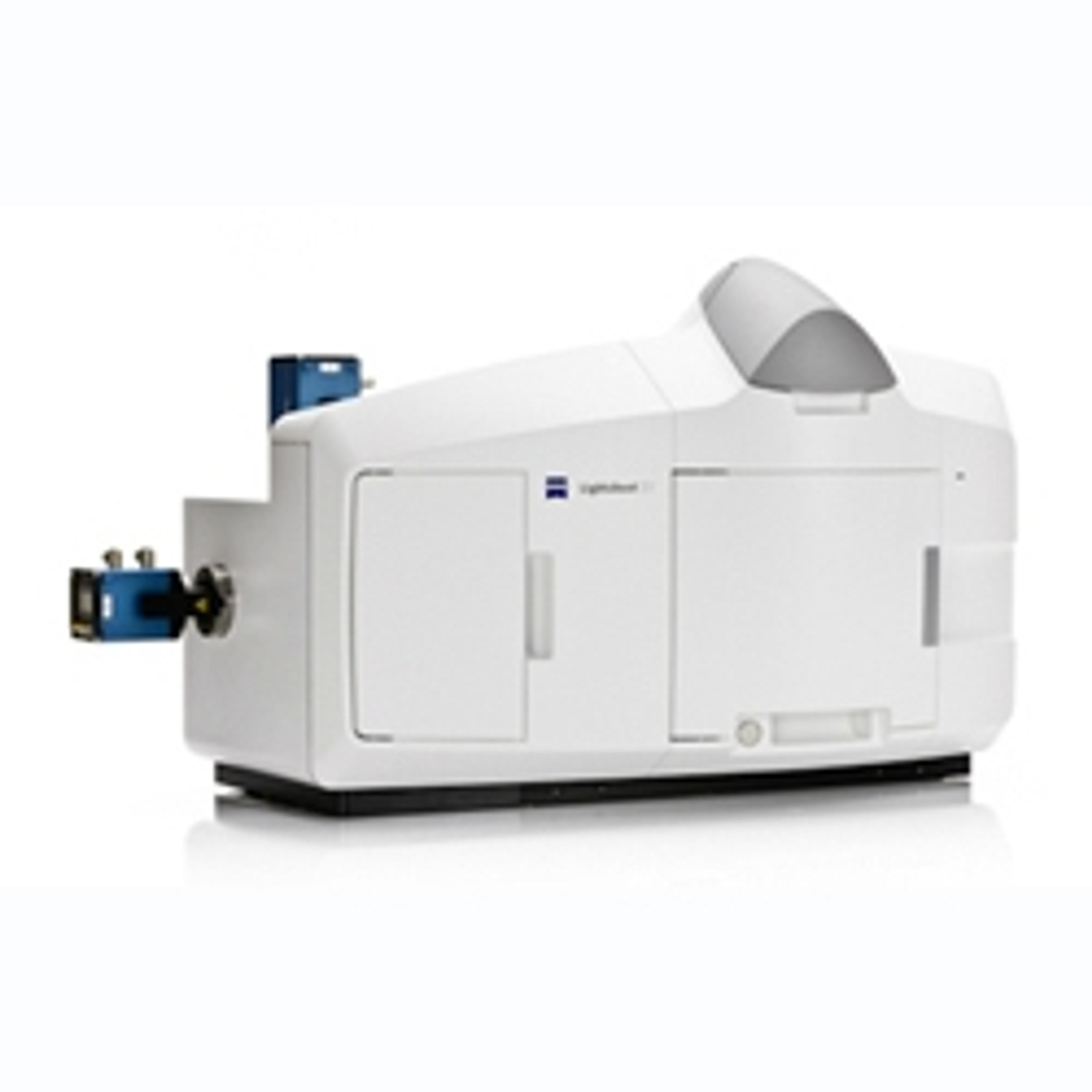3D Cell Culture Innovations of 2014
17 Dec 2014
A 3D cell culture is an artificially-created environment in which biological cells are permitted to grow or interact with its surroundings in all three dimensions. This year there have been a number of innovations that can be applied to 3D cell culture. The main categories are extracellular matrices or scaffolds, modified surfaces, rotating bioreactors, microscopy, magnetic levitation and hanging drop plates.
Hanging Drop Platforms
Human and Rat Neuronal Microtissues for Toxicity Testing
This poster reports on the generation of scaffold-free neuronal 3D microtissues derived from neonatal rat cortex isolations, as well as from human iPS derived neurons and astrocytes. The spheroidal aggregates are produced in high throughput compatible hanging drop plates. The microtissues are highly size consistent and culture handling is compatible with liquid handling robotics.
Rapid Production and Size Assessment of Embryoid Bodies (EB)
In this application note, InSphero's GravityPLUS™ hanging drop platform provides a simple, automation-compatible solution to the production of consistently sized assay-ready embryoid bodies (EB).
Perfecta3D® Hanging Drop Plates Protocol: 384-Well Plate Spheroid Transfer and Harvesting
Spheroids can be harvested from either the top or bottom side of the Perfecta3D Hanging Drop Plate. Once harvested, the spheroids can be processed for further culturing (eg differentiation, invasion assay, etc) or analysis (eg flow cytometry, immunofluorescence staining, histological staining, confocal microscopy, etc). This
note presents a protocol for the transfer and harvesting of spheroids from a 384- Perfecta3D Hanging Drop Plate.
Extracellular Matrices/Scaffolds
Reinnervate Perfusion Plate: Dynamic Circulation and Perfusion of Culture Medium within a Multi-Welled Plate
Reinnervate’s Perfusion Plate enables dynamic media flow and perfusion across cells cultured in 2D and/or 3D. This application note demonstrates how the plate, combined with Alvetex® technology, enables 3D perfused cell culture.
Formation of Mesenchymal Tissues in Alvetex®Scaffold Derived From Stem Cells and Established Cell Lines
This application note describes the use of Alvetex®Scaffold to support the differentiation of mesenchymal cells towards osteogenic and adipogenic phenotypes by providing a 3D cell culture environment. The data presented demonstrates that 3D culture using Alvetex®Scaffold radically improves the ability of these cells to form mesenchymal tissues, such as bone and fat.
Malvern Instruments Zetasizer Nano Plays Key Role in Research to Develop 3D Cell Cultures
Researchers at the School of Engineering and Materials Science, Queen Mary University London, UK, are using a Malvern Instruments Zetasizer Nano to provide particle size and charge data that is being used in the development of innovative hydrogel matrices for 3D cell culture. The Zetasizer Nano’s high performance electrophoretic light scattering capabilities are allowing researchers to better understand the nature of the electrostatic interactions between proteins and peptides. These measurements are crucial to developing bespoke cell culture platforms for the production of specific biologically significant hydrogel.
Microscopy/Imaging Technology
Multiview Light Sheet Fluorescence Microscope
The unique Multiview Light Sheet Fluorescence Microscope allows you to record the development of large, living samples and gently image them to deliver exceptionally high information content. The Light Sheet is suitable for many applications, including 3D Cell Culture.
Incorporation of a Novel 3D Cell Culture System to Perform in vitro Cytotoxicity Analyses using Human Primary Hepatocytes
Cytotoxicity, and in particular hepatotoxicity studies, are a common part of drug discovery, as well as other industries such as the cosmetics industry. The ability to perform long-term (multiple week) studies to determine the effect of chronic dosing of a test molecule is critical to ascertain proper data before going to clinical studies. Hepatocytes cultured in 3D give researchers the ability to accomplish this which did not exist when using 2D culturing techniques. This application note helps to further demonstrate how the Cytation 3 can be used with cells cultured in 3D.
Culture Vessels
Advantage of CELLSTAR® Cell Culture Vessels with Cell-Repellent Surface for 3-D Cell Culture in Hydrogels
This application note shows that when CELLSTAR® cell culture vessels with cell-repellent surface are used for
hydrogel culture, the formation of a 2-D subculture is suppressed effectively. The CELLSTAR® cell-repellent surface from Greiner Bio-One is achieved through an innovative chemical surface modification and is available with different formats.
The Thermo Scientific Nunclon Sphera Surface Supports Formation of Embryoid Bodies from Pluripotent Stem Cells
In this application note, the Thermo Scientific Nunclon Sphera is used for the in vitro formation of stem cell spheroids. The low binding property of Nunclon Sphera surface was demonstrated by low cell attachment of adherent cell lines, as well as by the formation of embryoid bodies (EB) of both human embryonic stem cells and mouse embryonic stem cells. EB formation in Nunclon Sphera dishes was compared to either non-treated or cell culture treated dishes. These results demonstrate the advantage of the Nunclon Sphera surface for embryoid body formation in the process of pluripotent stem cell differentiation.


